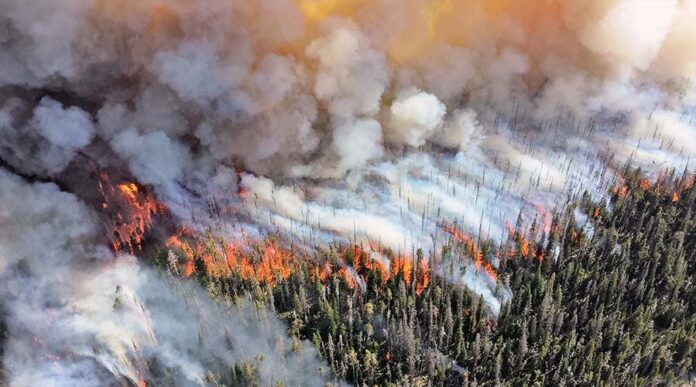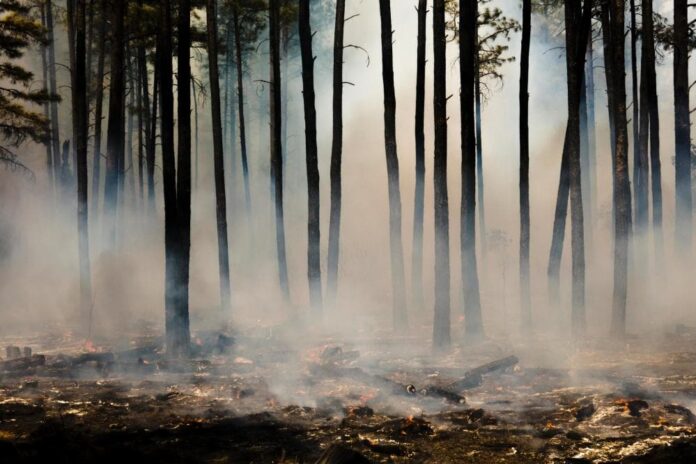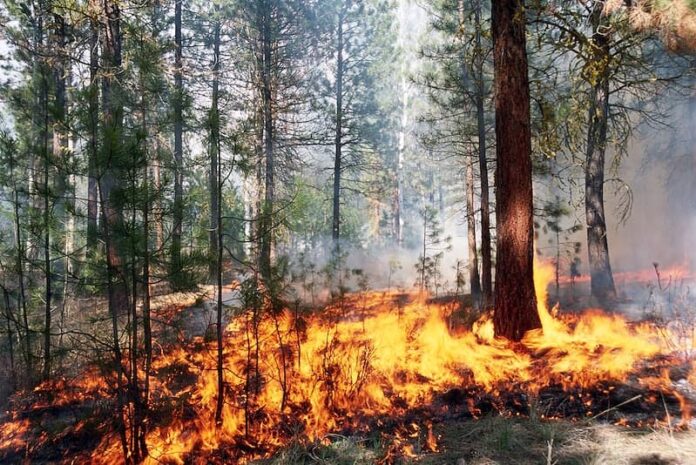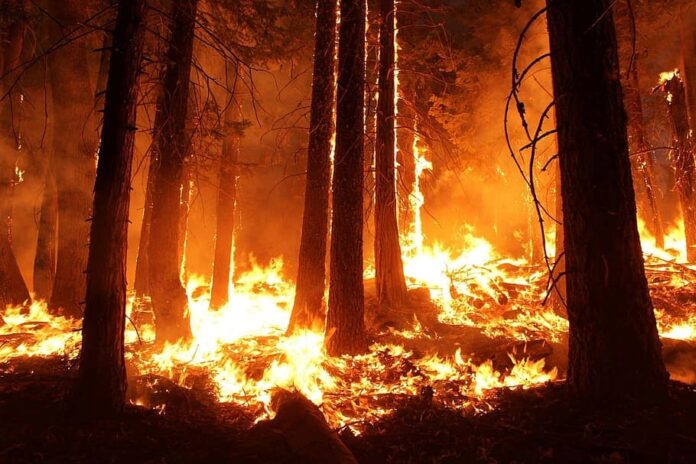We know what a forest fire or wildfire is, but do we know that there are different types of forest fires? Not all of us do, and we are going to discuss just the very topic today. Basically, there are 3 types of forest fires including crown, ground, and surface. Sometimes one type occurs but it is not uncommon to have all 3 forest fire types at once. Let’s find out more about each wildfire type below with me.
1Crown Fire

Simply put, crown fire is a forest fire that spreads at great speeds from treetop to treetop. There are 3 types of crown fire including passive crown fire, active crown fire, and independent crown fire. Normally, a crown fire begins when there is an indicator of the potential fire starts to ignite. The indicator can be dead and live foliage or branches, grasses, lichens in trees, or litter on the tree. These indicators usually start at least 1 meter above ground before ascending to the forest canopy and spreading through the treetop.
An active crown fire is a solid wall of flame from the surface through a tree canopy. And then from one tree crown to the next through the canopy. As for the passive crown fire, it occurs where the surface fire intensity is sufficient to ignite tree crowns. It could be individually or in groups, and it does not depend on the wind to spread. Independent tree fire is very rare, and it occurs when the tree crown itself can carry fire due to its flammability. Regardless of the type, a crown fire is the most dangerous and intense forest fire type.
2Ground Fire

Just like the name suggests, a ground fire starts below the surface or under the ground. This forest fire type usually does not have much flame because it smolders. It can be from indicators such as leaves, needles, roots, or rotting branches that are below ground. Usually, the layer is made up of compacted dead plant materials aforementioned that turn into sustained fire by glowing combustion. To cut things short, a ground fire is glowing or smoldering combustion of decomposed organic materials below the surface.
Because it has little to no flames, a ground forest fire can go unnoticed for days or weeks before slowly spreading. Not to mention that it is also difficult to fully put out or suppress, it is quite dangerous. The tricky part about this forest fire is that it can smolder all winter underground and then emerge in spring.
3Surface Fire

Obviously, a surface forest fire begins on or near the surface of the ground. It usually burns indicators such as herbaceous, lichen, litter, loose needles, moss, saplings, shrubs, small trees, and vegetation. Depending on the surface fuel, this fire can grow larger and taller it can lead to the crown fire. However, surface fire normally burns the surface duff and litter. So it is the fire that causes the least damage and the easiest forest fire type to put out.
Firestorm
Apart from the 3 main forest fire types, there is another category which is the firestorm. A firestorm occurs when there are multiple wildfires in the same area, and the heat from a wildfire creates its own system. It spreads the most rapidly in the form of intense fire over a large area. A firestorm is fast, especially where the air rushes in as the fire burns and heat rises. The presence of the air will make it spread even faster, spinning violently like a storm. This type of fire can reach a temperature of 1,000 degrees Celsius, and putting it out takes days or weeks.
Related Post: Plants That Encourage Forest Fire





